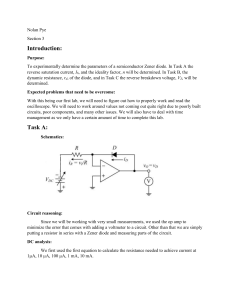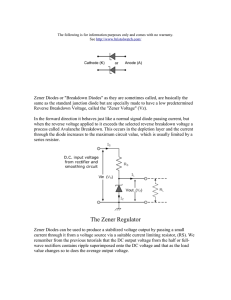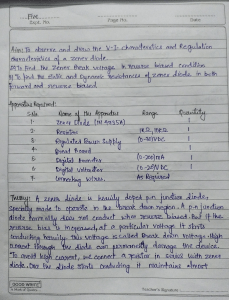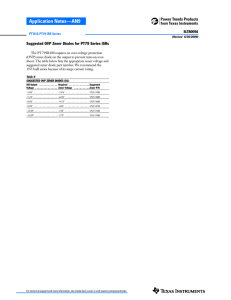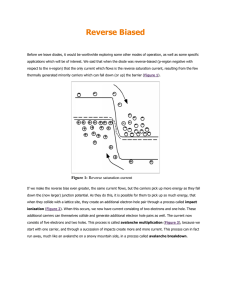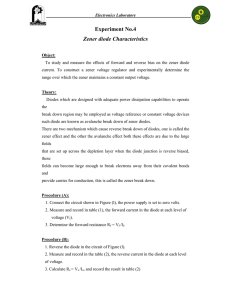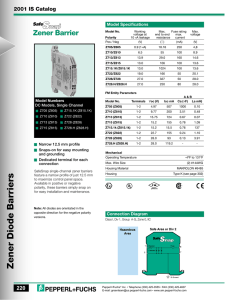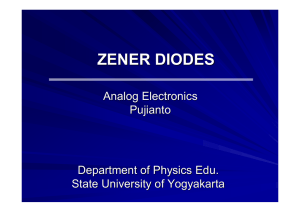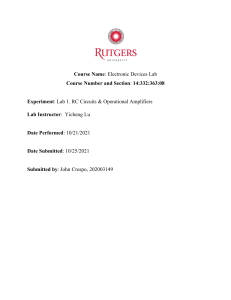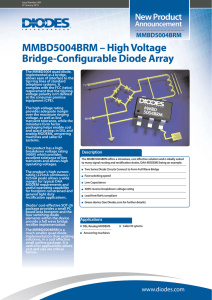DIODES
advertisement
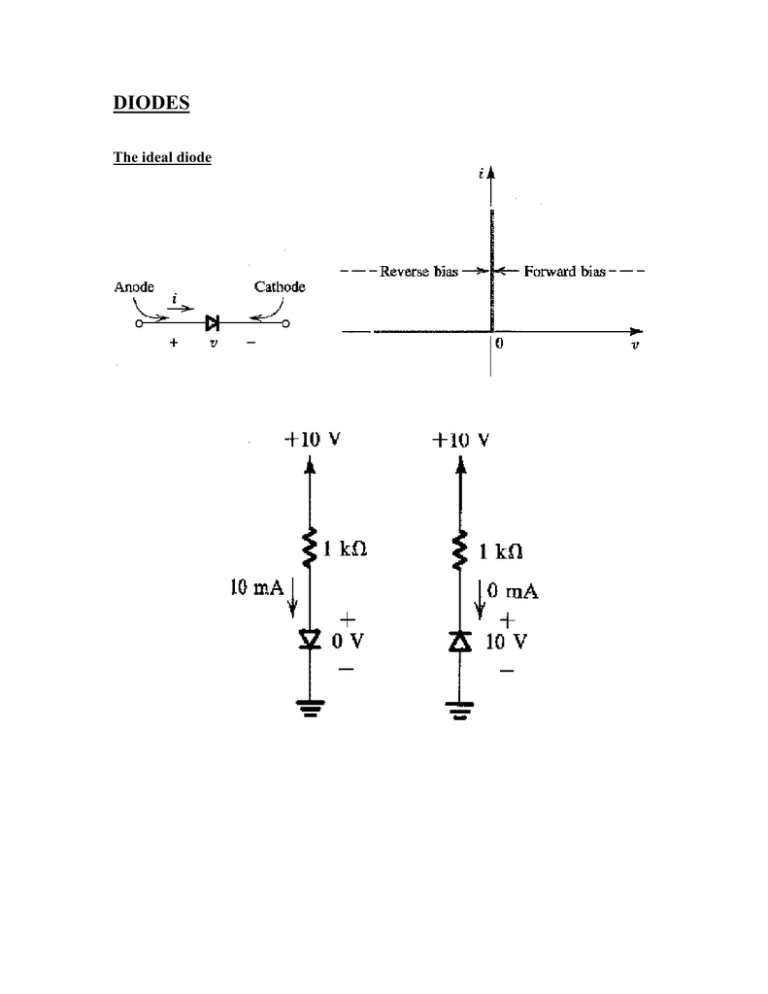
DIODES The ideal diode D1 & D2 are ideal, find I and V Solution: Assume D1 & D2 are conducting (i.e., forward biased). Note that solution should verify the assumption, otherwise a new assumption has to be made. Since D1 is ON, VB = 0, and ∴V=0. ID2 = (10-0)/10 = 1mA I+ID2 = (0-(-10))/9.9 ∴I+1 = 10/9.9 = 1.01mA Since I >0, D1 is ON as assumed. D2 is ON by virtue that VB=0. Terminal Characteristics of Real Junction Diodes i = I s (e v / ηVT − 1) Is = saturation current or scale current. Is doubles for every 10°C rise in temperature. I S (T2 ) = I S (T1 )2 ∆T / 10 kT VT = q I.e., k = Boltzmann’s constant = 1.38×10-23 joules/Kelvin T = 273 + temperature in °C q = 1.602×10-19 coulomb = electronic charge At room temperature (20°C), VT ≈ 25mV IS is on the order of 10-15A. η = 1 for diodes fabricated as part of an I.C. = 2 for discrete 2-terminal components. For v >> η V T i ≈ I S e v / ηVT or v = ηVT ln i IS Vγ= Vγ = threshold or transition voltage ≈ 0.5V for Si diodes. Vγ Decreases by 2mV/°C, i.e., Vγ (T2) = Vγ (T1)-2(T2-T1) Note for v<0, i ≈ -IS which is saturation current. The Breakdown Region and Zener Diodes VZK = Breakdown voltage = knee of the i-v curve. In the breakdown region: a large increase in IZ results in only a small increase in VZ. Voltage Regulators Circuit Symbol for a Zener diode. If RL is not connected (no load condition), VO = 6.8V. I = (10-6.8)/0.5 = 6.4mA If RL = 2kΩ be connected, IL = 6.8/2 = 3.4mA ∴IZ = 6.4-3.4 =3mA If IZ < IZK, the Zener diode leave the breakdown region, and the diode becomes approx. open circuit. VO = V + RL R + RL If R = RL V+ = 10V, VO = 5 < VZK the voltage required for the Zener diode to operate in the breakdown region. Zener Resistance ∆VZ ≈ ∆rZ ∆I Z ∆VO = ∆V ∆VO ∆V rZ // RL R + rZ // RL voltage regulation
